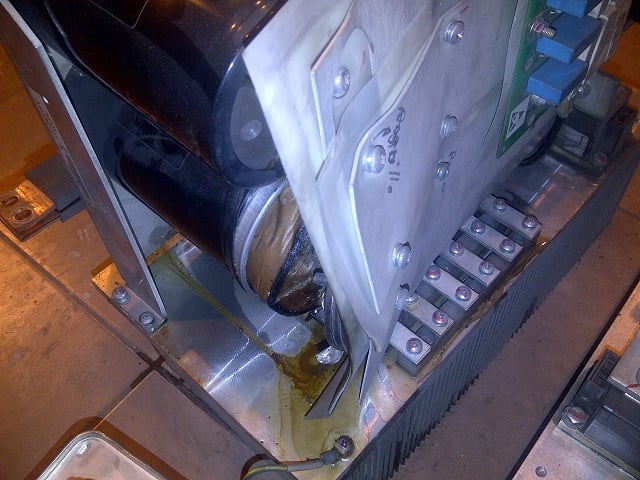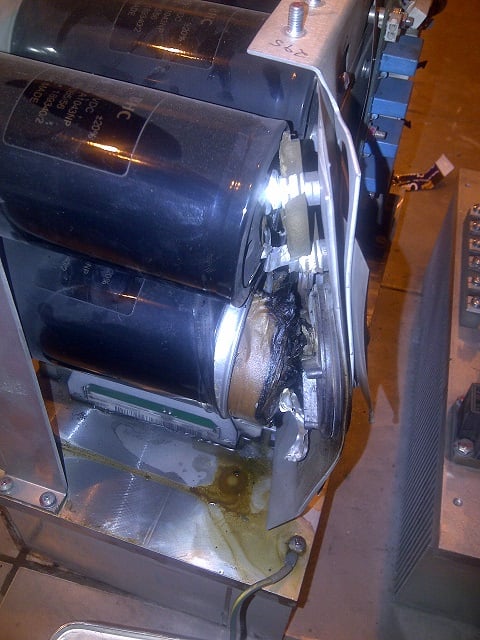I recently had a situation occur where a customer had a VFD fail and asked me to set up the spare in its place.
The drive was a 40 HP, 575 VAC chassis. I walked into the room just in time to see flames coming out of the spare. The power had just been turned on. The spare had sat on a shelf in the stock room for 10 years.


Figure 1: Failed Capacitors in Spare VFD
The electrolytic capacitors that make up the capacitor bank for the DC buss in a VFD begin to break down after a year or so of sitting without having had power on them. This break down will vary with the amount of ambient heat in the area that they are being stored. The electrolytic capacitors in a VFD that has been sitting for ten years are almost certain to fail when the power is applied. A process of reforming the capacitors needs to be done when a VFD has not had power applied for several years. Newer VFDs use “film” capacitors. Film capacitors do not break down and thus a forming process is not required.
To reform capacitors it is necessary to apply lower voltages in steps for a period of time, and it can be challenging to find a source for these lower voltages.
Most 3 phase VFDs have a three phase diode bridge or half controlled bridge using three diodes and three SCRs. In both cases the manufacture provides a means to “pre-charge” the DC buss. When low voltage is applied to the drive the DC Buss will not likely charge enough to cause the pre-charge circuit to be by passed. This is not a problem. It is also not necessary to connect three phase. A single phase connection will be fine.
I suggest starting by applying 120 VAC to L1 and L2 of the VFD via an ordinary wall outlet.
Keep the power applied for an hour or so. If the 15 A breaker protecting the wall outlet trips, then the capacitor bank has degraded beyond restoring.
Next, apply 240 VAC single phase for another hour.
If the drive is rated for 480 VAC, then the next step would be to apply 480 VAC and allow the drive to sit before running the drive.
If the drive is 600 volts, it would be best to find a 480 VAC supply and give it an hour before going to the 600 VAC level.
Whether 240, 480, or 600 VAC be sure that the supply is protected with small fuses or a low rated breaker. 10 or 15 amps will be plenty. The smaller the fuses, the smaller the bang should the capacitor bank fail.
If you are in a situation where you need to start up a drive that has been sitting and are not sure what it has, give us a shout, we are happy to help!
Sign up for our Knowledge Base notifications


